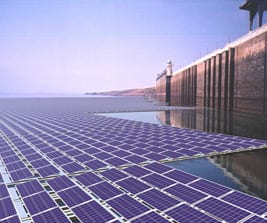Brazil has become the latest nation to embrace floating solar power technology, with the announcement of a massive 350MW project at the Balbina hydroelectric plant in the Amazon.
According to reports, Brazil’s energy minister Eduardo Braga said late last week that the government planned to begin a series of pilot tests of solar power generation on hydroelectric dams within four months.

Electricity generated by the first 350MW “pilot” plant is expected to cost between approximately $A90 and $101 per megawatt hour.
As Energy Matters notes, Brazil has a good track record on renewables, with a mostly hydro-powered supply accounting for more than 85 per cent of the domestically produced electricity used in the nation by 2009.
The country’s 250MW Balbina hydroelectric plant has, however, courted controversy, amid claims the methane released from the massive reservoir make it more greenhouse-gas intensive than most coal plants.
But the floating solar could help address this and other problems, as it has been shown to reduce water evaporation and restrict the growth of methane-producing algae. The water also helps to keep the solar panels cool, boosting their conversion efficiency.
Australia has also recently announced its first floating solar project, with construction set to begin on a PV array that will cover up to 90 per cent of the surface area of a wastewater treatment facility – and power it – in Jamestown, South Australia.










